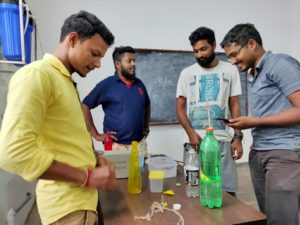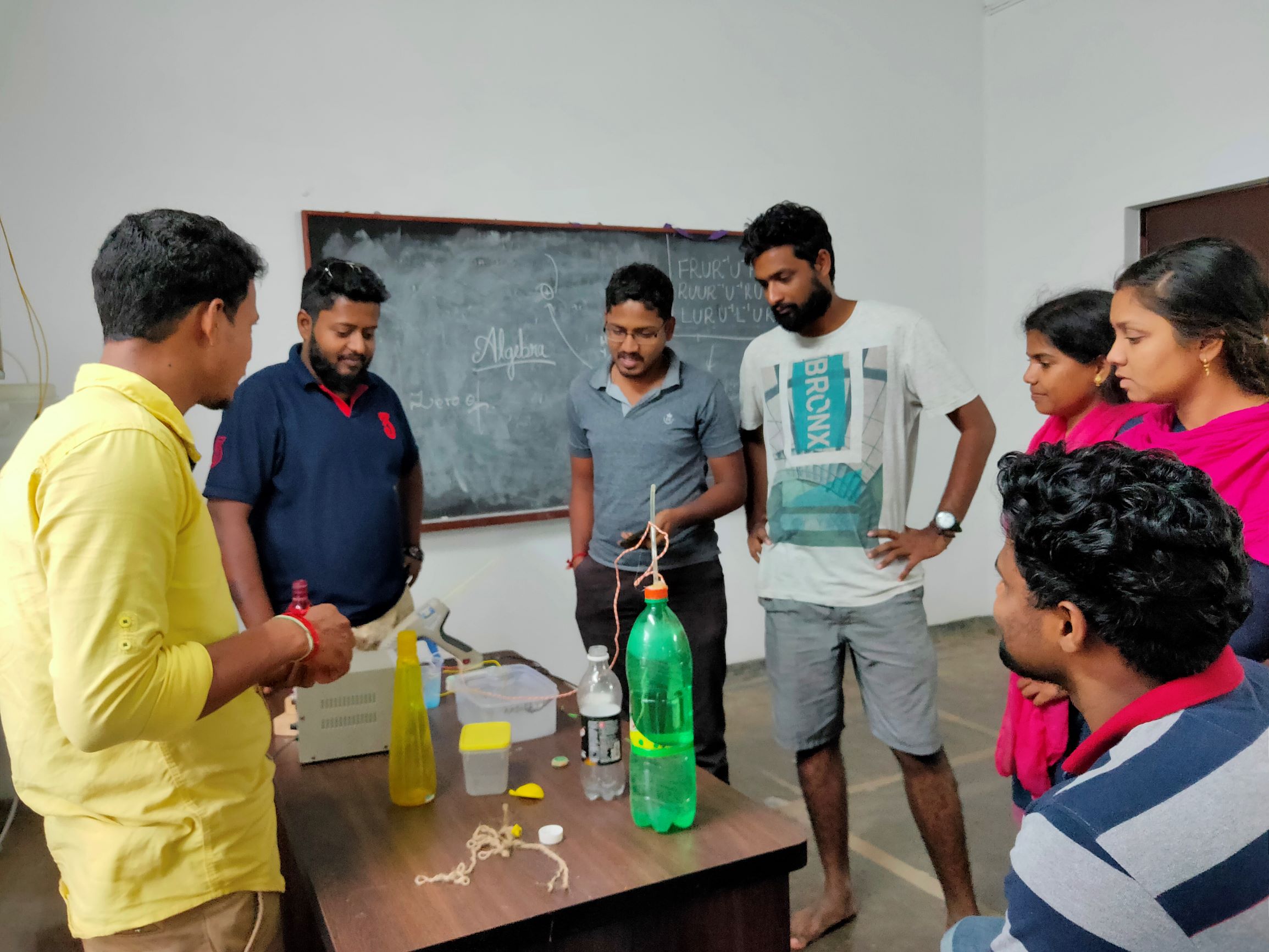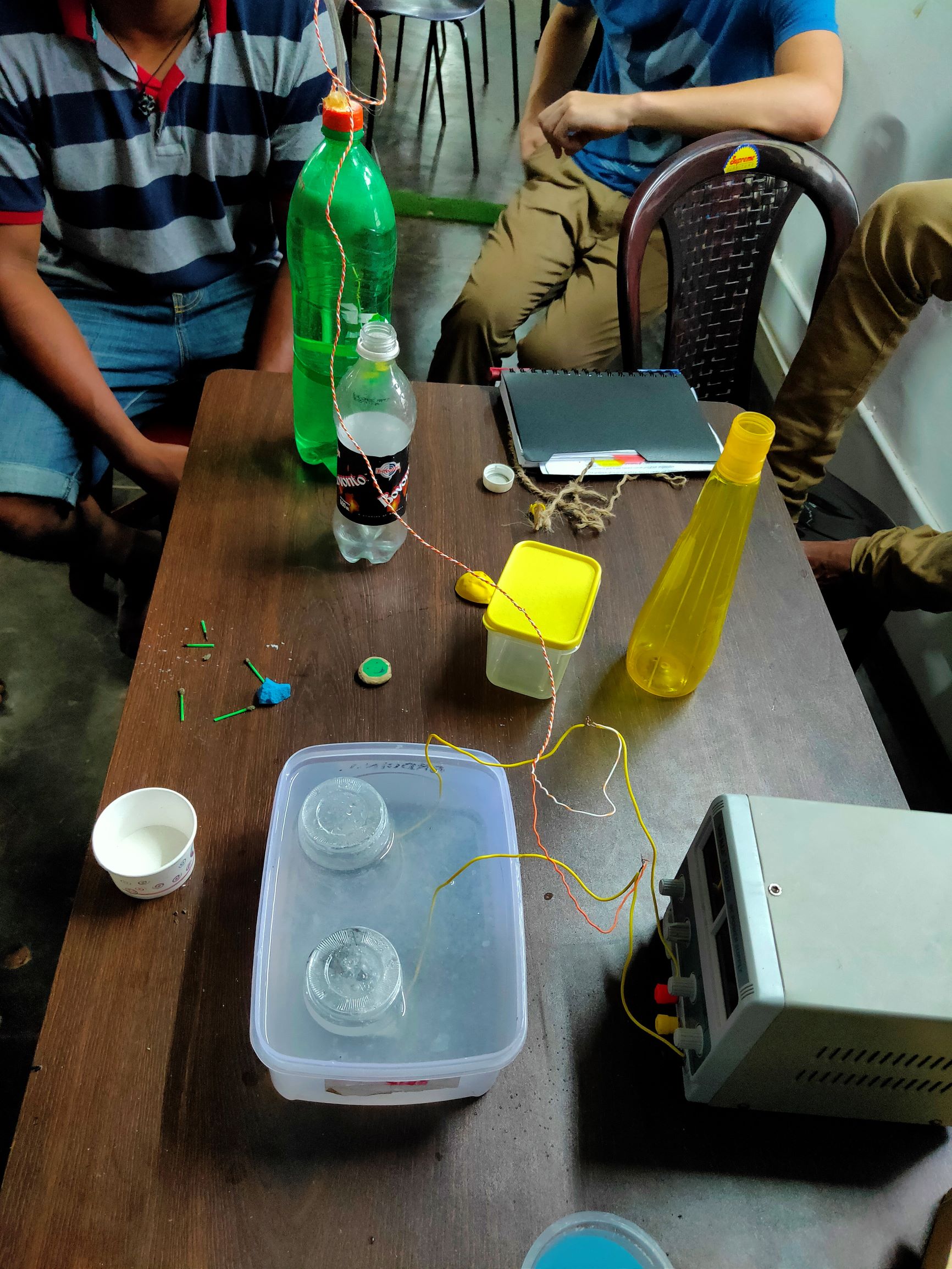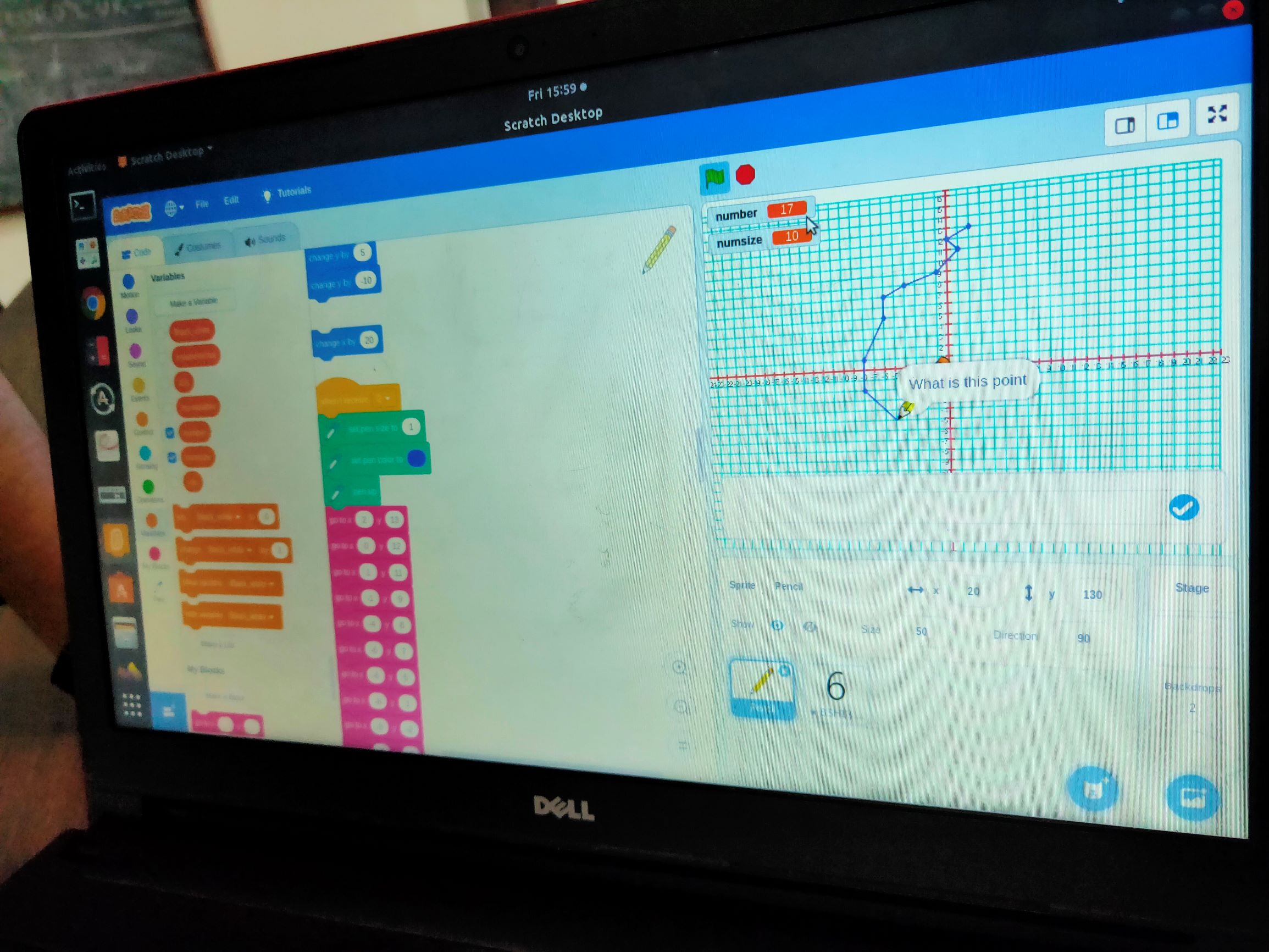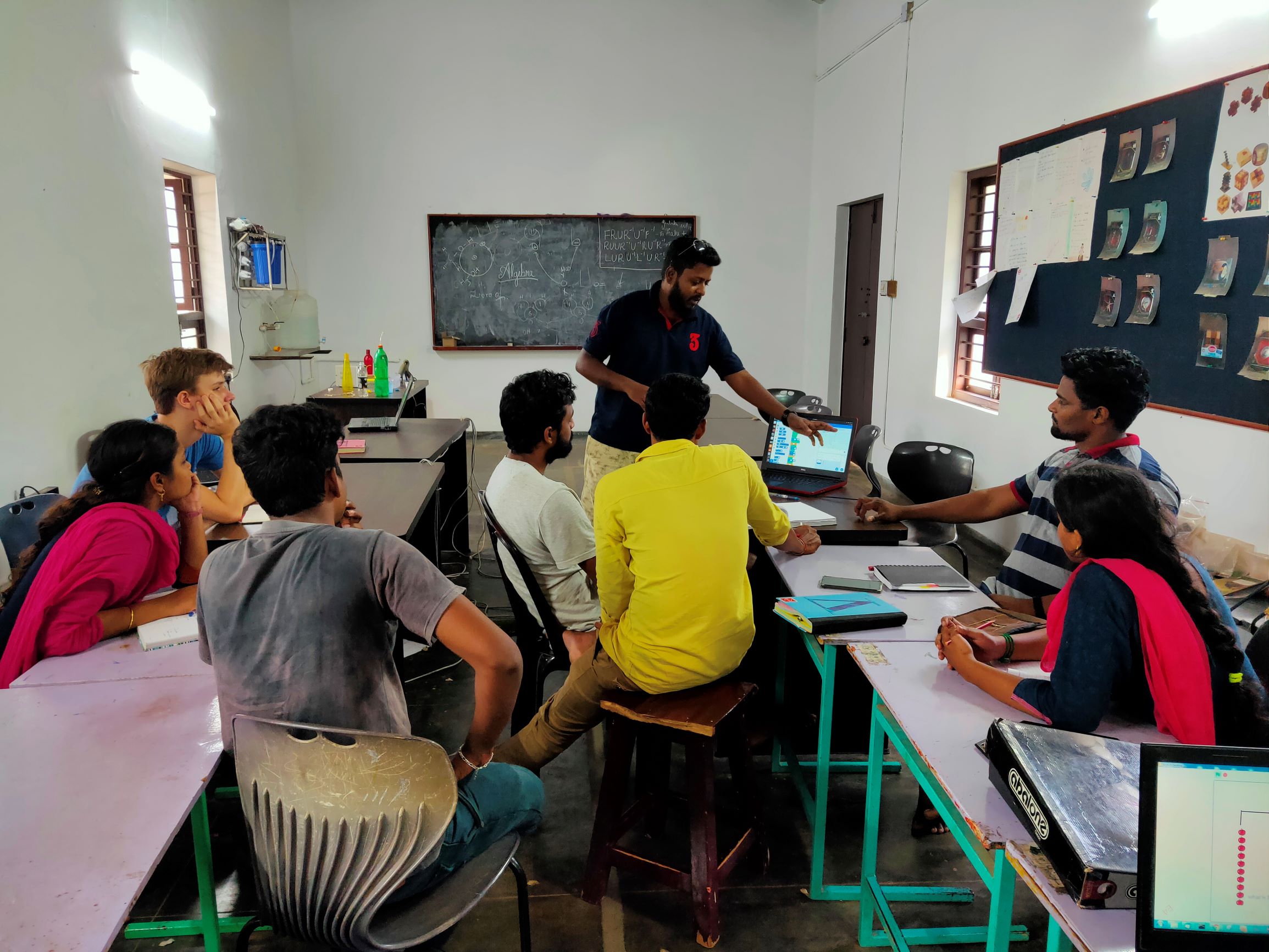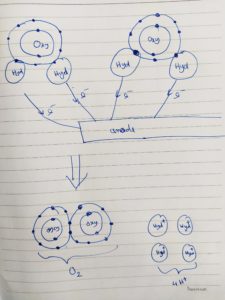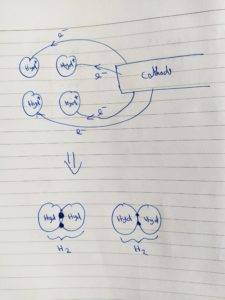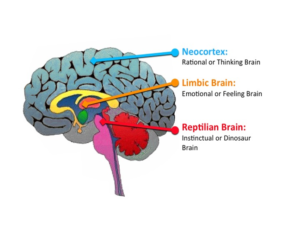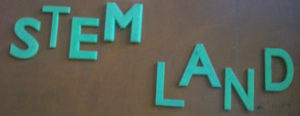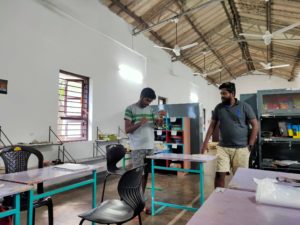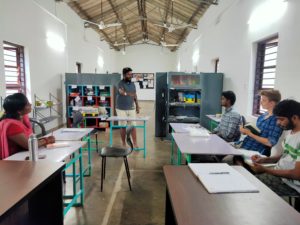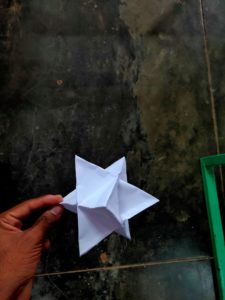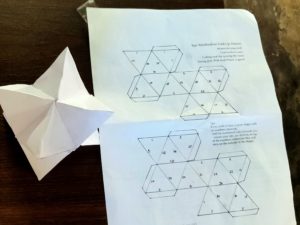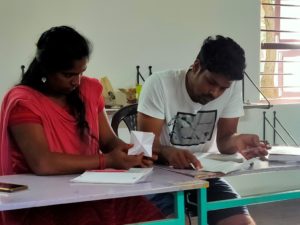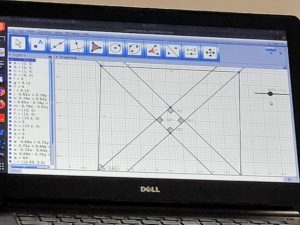~Saranya and Ranjith
This story is about reacting to the problem, realizing and being responsible. If problem occurs in our life either we react to the problem or we do realize and react.
Parikshith
(The story behind Srimad Bhagavatam)
Parikshit, was the son of veera Abhimanyu and Uttara and was the only successor of the Pandavas.
After Krishna left the earth, the Bhu-devi sank into uncontrollable sorrow due to the entrance of Kali (Kali yuga, the age we live in). All kinds of adharmic activites starting taking place. There was a slow withdrawal from our Vedic heritage, charity decreased, adherence to Satya or Truth reduced. But King Parikshit, with his power, controlled Kali and kept him under check. Kali however begged Parikshit Mahaaraja not to kill him saying that following the dharma of time, since it is the start of Kaliyuga, he must be allowed to come and must not be killed. Thus obeying the kaala-dharma, Parikshith allowed Kali to saty in some specific places such as places of ill repute such as gambling, slaughter houses and the like.
Once after a long hunt in the forest, completely exhausted, Parikshit reached the ashram of a great rishi, Shameeka maharshi. The maharshi at that time was in deep meditation and completely detached from the external world. Hence, he did not notice the exhausted Parikshit mahaaraaja. King Parikshit, completely exhausted and very thirsty, thought that the maharshi, despite being aware of his exhaustion, chose not to offer him even water. In anger, he performed an act he normally would never have done. The anger itself and the way it was manifested was due to the presence of Kali it is said, because the King was a strict follower of Dharma and would have never shown allowed himself to get angry in such a manner. Thus in anger he put a dead snake around the neck of the rishi to insult him and left the ashrama. A little while later, the rishi’s son Shrungi, arrived and saw the dead snake around his father’s neck. Realizing that Parikshit had done this act, he cursed Parishit saying within a week’s time, the King who had insulted his father thus would be killed by Takshaka, a mighty snake. Meanwhile the maharshi opened his eyes from his deep meditation and learnt about all that had happened.
Maharshi Shameeka told his son Shrungi “Anger is the main hindrance to tapas / sadhana / meditation. It is a big hurdle for one who follows the path of Dharma. He never should give way to anger. One must always think twice before he acts and never come into the clutches of anger. One’s anger is his greatest enemy. A person loses his dharma-adharma discrimination, does not think and causes harm to others and himself because of anger. Parikshit mahaaraja is not an ordinary king. It is because of him that Dharma is still alive on earth today. It is because of him that Kali has been restricted. ”
“Alas! What a great sin you have committed yourself today in awarding such a heavy punishment for the small mistake King Parishit committed! Your command of intelligence is still immature. Completely protected by his just way of rule, all beings in Parikshith’s kingdom enjoy prosperity. Once he is killed because of your curse, this world will be full of thieves who immediately trouble innocent, unprotected souls like they are lambs. Because of this curse, there will be great social disruption. The wealth everywhere will be seized by thieves and among the people there will be murder and molestation as also abuse of money, women and animals. The righteous civilization, of humanity united in proper conduct of progress in the vocations and stages of life according to the Vedic injunctions, will at that time systematically be vanquished. The protector of the religion, the king, is a highly celebrated emperor, a direct, first class devotee of the Lord, a saint of nobility and a great performer of horse sacrifices. When he, hungry and thirsty, is stricken with fatigue, he never deserves it to be cursed by us like this.”
“I am quite sure, Parikshit mahaaraaja will not give you a counter curse, such a great king that he is. Good people do good to those who help them and to those who hurt them as well. Mahatmas do not even feel the pleasures and sorrows, everything is same.”
The Maharshi thus regretted the curse of his son and certainly did not think that the insult by Parikshit was a sin. Generally saints are not distressed or happy when others pull them into worldly dualities because they are situated in the transcendence of the soul. These incidents (such as the dead snake put around his neck) they consider insignificant.
In the meantime, King Parikshit realised what he had done was something terrible, something he should not have done and thought thus, “Alas, it was uncivilized and evil what I did to the faultless, grave and powerful Maharshi. Because of the contempt of what I did against that godly person, I undoubtedly very soon will meet with a very troublesome calamity. I certainly hope that that will happen so that I will be relieved of my sins and never do anything like that again.”
Shameeka, knowing that now nothing could be done (since the words of his son Shrungi could not be undone), sent word to King Parikshit informing him about Shrungi’s curse. Thus did Parikshit mahaaraaja come to know about the curse.
Having heard that he only had seven days to live, Parikshit handed over his kingdom to his son and sat down at the banks of river Ganga in order to fast and observe religious rites unto his death. Many sages and wise men came to see him. Parikshit paid his respects to them and humbly spoke about his decision to fast. He stood with folded hands before them as someone whose mind is detached from worldly affairs. And thus it came to pass that the king, having arrived at that decision, fully self-controlled, seated himself near river Ganga. On this occasion the gods, who from the sky had seen that the king would fast until his end, all in praise scattered the earth with flowers, continually beating celestial drums in pleasure. All the great sages who had assembled there praised him for the wisdom he had thus shown.
It was at that time the great Suka Maharishi came that way, and he was received with great respect by the audience seated around King Parikshit. Then Parikshit asked him a question: “What is good for man, especially at this hour when his life is about to end? What should such a person hear about, repeat, do, remember and worship.”
How are we to answer this question? What is good for any person? In the freezing heights of the Himalayas, it is good to have a blanket over oneself. But a blanket is not good in the hot deserts of Africa; we would like to have cold water there. When we are hungry, it is good to have delicious food; when we are vomiting due to illness, it is good not to eat at all. Anyone who desires his or her own good cannot answer this question of what is actually good for oneself, because whatever answer we give, we will find it is connected to some cause thereof, and it is not the final good.
Riches will end, the body will wither, and life is uncertain. None of these things connected with life in this world can be regarded as really good in their ultimate sense. Then, what is really good for the human individual? The difficulty in answering this question arises because we think that we are living only in this world of sensory perception.
So, when we ask the question, “What is good for us at the end of time?” it is implied that it is that which is good for us at all times because, knowing the brittleness/short life of things in the world, all times are the end of time. The supreme good, therefore, is the Supreme Brahman, the Ultimate Reality that we call God which is intimately, vitally, inextricably connected with our own souls.
Suka Maharshi said, “This inquiry of yours, O King, for the good of all people is the best thing you can do. This subject of study carries the approval of Rishis. The subject matter is the supreme of all, Divine, God, is worth the attention. O Emperor, there are countless subject matters to hear about in human society that are of interest to those who, attached to their household life, are materially engrossed and are blind to the reality of the soul. They spend their lives, O King, with sleeping, making money, taking care of their family and other such related activities. They are unable to see the fleeting nature of these activities. For that reason, O King, He (Divine/God) must be discussed, glorified and remembered who as the Supersoul, the Supreme Personality, the controller and vanquishing Lord, frees those who are of desire from their anxieties.
Thus in response to the question Parikshit asked, Suka Deva narrated the stories of Bhagavatam. It is believed that this great scripture, the Srimad Bhagavatam, is like a delicious nectar. It is a combination of bhakti or devotion, vairagya or renunciation and jnana or knowledge. Jnana, vairagya, and bhakti – all the three are combined in a wonderful manner in the narration of the Srimad Bhagavatam. Sri Krishna Himself is supposed to be living in this wonderful scripture. Whoever studies the Bhagavatam is supposed to be reading the life of Lord Krishna Himself.
tava kathamrtam tapta-jivanam
kavibhiriditam kalmashapaham
shravana-mangalam srimad atatam
bhuvi grnanti ye bhuri-da janah
your story which is like Amritam revives the scorched spirit of a man;
purifies a sinner, the holy men thrive on it.
To hear it is auspicious and peace generating.
Those who chant your name are the real benefactors.
Srimad Bhagavatam
